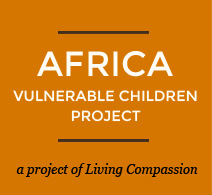Agenda for today: pick up the money from the monthly wire for the cooperative stipends; explore a reading assessment system; revise the Girls Program agreements to reflect performance expectations and continue to gather information on the girls’ reading abilities, daily schedule and any other information to assist in the individual attention focus; continue practicing Skype with Theresa; meet with the team to go over the new plan to arrange girls into pods (the new support model) and assign a teacher; ensure teachers have the language to discuss relevant parts with the students; and plan for Saturday's events, including tracking down a hard-to-find LCD projector. No problem!
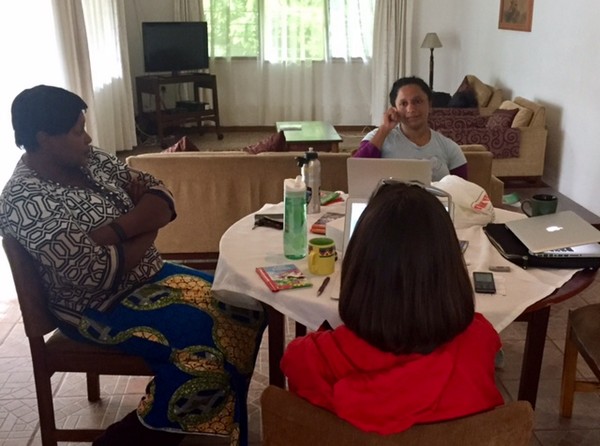
The team making a game plan for the day
A game plan’s greatest asset is flexibility. Picking up the wire at the bank would normally be a fairly quick errand, but due to the power going in and out (not uncommon in our Zambian experience), we were there for nearly 40 minutes. While two people were in the bank, two others waited in the van, catching up on writing the blog!

The FNB bank in the center of Ndola
For the first time in many days, we arrived on the property without rain. And again, we were welcomed. What a daily blessing!

Today the boys were the primary welcoming crew. Bruce, on the right, gave us the thumbs up.
We got straight to work. Using the recently purchased books, most of which are already leveled and contain comprehension questions, we explored an intial assessment structure of 7 reading levels. This will help us get a better picture of each girl’s reading level and assist in tracking their progress. We gave the assessment a couple of test runs with students, and then brought in Malila, one of teachers, to demonstrate what we were doing.
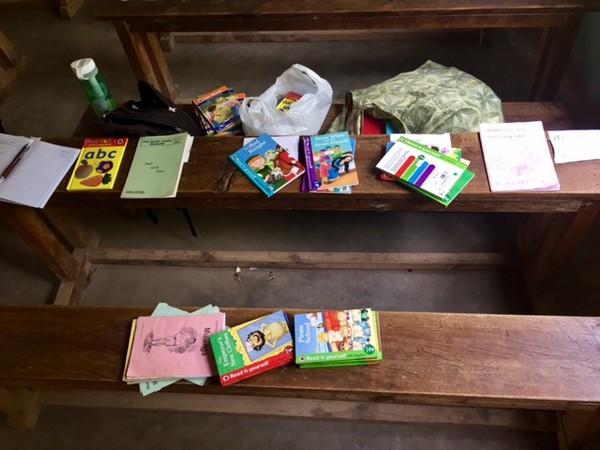
Mapping the assessment with our new books, along with some Zambian equivalents. It helps to have some folks on the team with student education backgrounds!
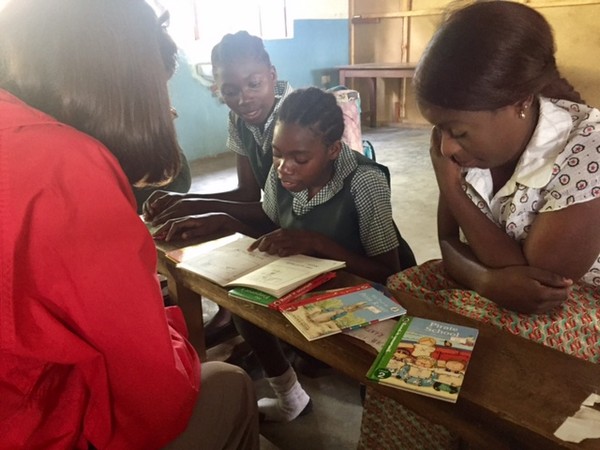
Susan going through our pilot reading assessment with Jen and Malila.
One thing that stands out is that Zambians, at least the ones we are around, are group oriented. All the teachers eat together every day and are often found sitting in groups talking during free time. It seems the same with the students. A few students and adults are in one classroom, and within ten minutes, all the students doing extra reading find their way into the same room!
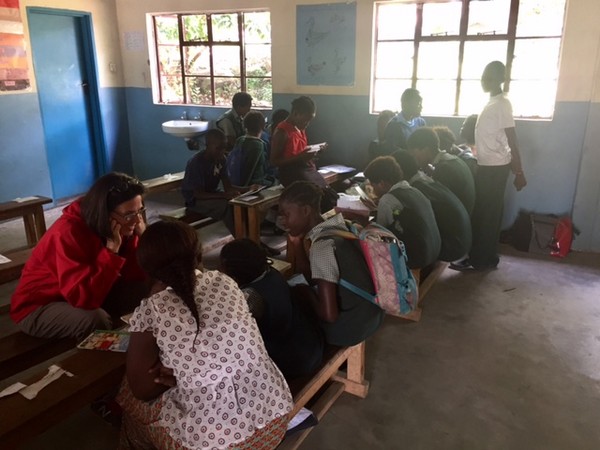
Some students are participating in the assessment, while others read on their own.
It’s good to note that these students have finished their classes at government school today. Every day, they walk to Living Compassion, participate in extra lessons, and then practice reading English. What commitment!

Margret and friend read together.
Some of the girls practice writing on the chalkboard, including the word of the day –happy. Margret writes and says, “I am happy.” We respond, “We are happy too!” Without pause, Margret beams, “We have much to be happy about!” Indeed!
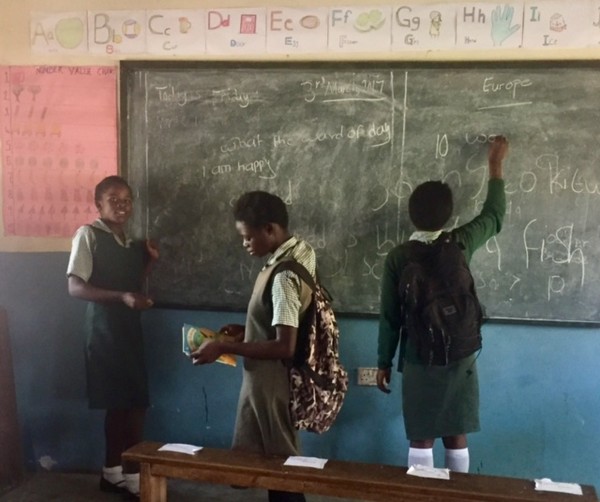
Some girls write on the chalkboard while others read. On the left it reads, “I am happy.”
Although it would have been excellent to sit down with Margret and name all the things we are happy about, we were running late for our meeting with the teachers. Remember all those things we wanted to do with them today? Oh, yes, and just to be clear, happiness doesn’t need to be postponed, does it? As we made our way to the meeting, we said to ourselves some of the things we are happy about: these girls wanting to learn, the US team getting to know the students better, adults working cooperatively, teaching and learning in a beautiful building, everyone at Living Compassion ate today, the sun is shining….
The meeting began by summarizing our structure. We will have 37 students divided into pods of five or six students with a teacher assigned to each pod. The teachers will be responsible for everyone in their pod and will endeavor to be creative, ask for help, and consult regularly with the other teachers. We are keeping the number small so we can maximize our attention and resources on the students, improving their language skills so they may pass the school tests and continue their education. If any of the girls drop out or don’t keep up with other agreements, we will have other girls who want to be in the program “on deck,” ready to jump in. Therefore, the program will always have 37 students. Next, we went through the reading levels of all 37 girls to group the pods by ability.
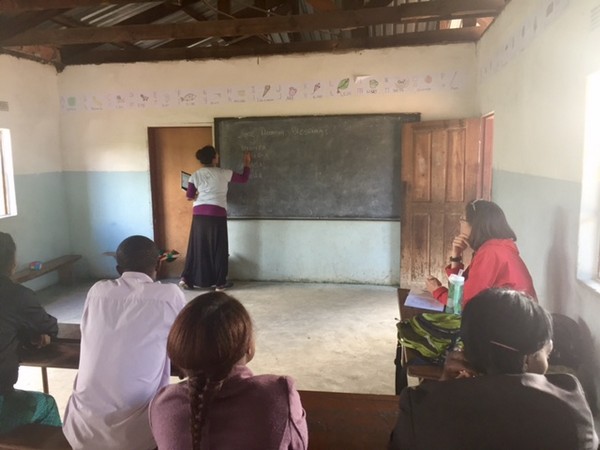
Sreedevi leads the discussion on pod groupings.

Charles is asked to give his feedback on a student’s reading ability.
It was informative to look as a group at each student. We formed a more accurate picture of each girl’s language skills. After a lengthy effort, we had seven pods and seven assigned teachers. Other teachers will staff the library where any student (whether they are in the Girls Program or not) can get extra support. Great job team!
As we gather our things and head to the van, we notice we leave the same way we came in – sunny!
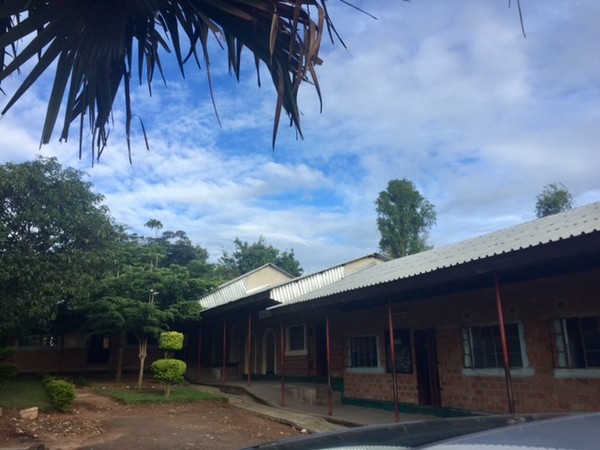
Did we mention how happy we are with this beautiful building?
On the drive back to the lodge, we admire the vast sky full of magnificent clouds.

Some kids take a break from playing football, maybe enjoying the majesty as well.
Oh, and in between our events today, through several phone calls, we secured an LCD projector. Why do we need an LCD projector? You’ll have to read tomorrow’s blog to find out! For now, we’re heading back to the lodge to walk the neighborhood (get our exercise), eat dinner, write the blog, and get ready for another transformative day!
